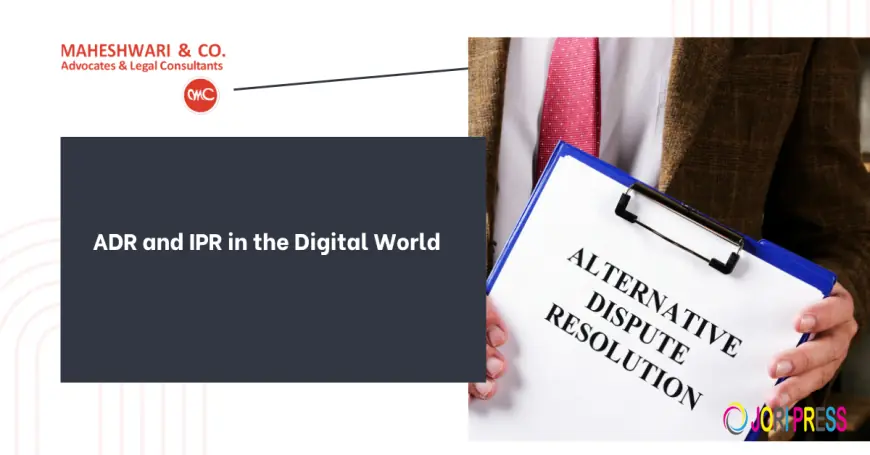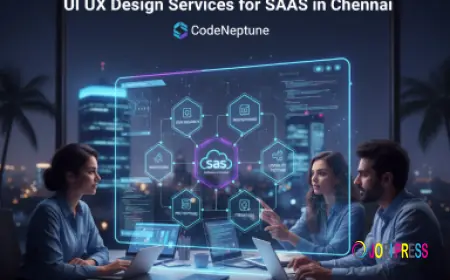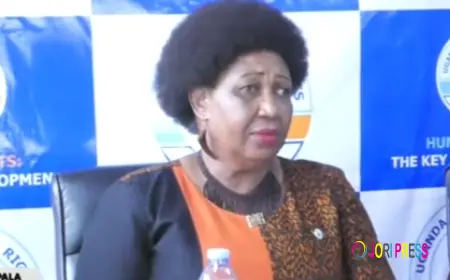ADR and IPR in the Digital World

Introduction
Computers, the internet, and other electronic communication networks have created a virtual world that is popularly referred to as "cyberspace”. Cyberspace connects us all globally, transforming traditional ways of human interactions, transactions, and knowledge sharing.
The digital era presents several complexities, especially when disputes arise, including the need for domain specialists who can adjudicate cross-border digital disputes involving multiple geographical jurisdictions and legal regimes.
Types of ADR Mechanisms Relevant to IP Disputes
The term Alternative Dispute Resolution (“ADR”) refers to a way of resolving conflicts outside of court. ADR mechanisms typically include negotiation, mediation, and arbitration. Uniquely, Indian laws require pre-institution of mediation clauses for all commercial disputes, including IPR disputes in transactions and contracts. Resultantly, India has evolved a specialised dispute resolution mechanism for commercial disputes to ensure speedier resolution through stricter timelines and unique court procedures, given the urgency of the conflicts.
ADR mechanisms are increasingly used in IP enforcement as they offer faster, cost-effective, and confidential resolution of disputes compared to litigation. Arbitration and mediation are commonly adopted, especially in licensing, technology transfer, and trademark co-existence agreements.
The Arbitration and Conciliation Act, 1996, governs arbitration in India, while mediation is encouraged under the Commercial Courts Act, 2015. Globally, institutions like WIPO's Arbitration and Mediation Centre provide specialised forums for IP disputes, including domain name conflicts under the UDRP. Pertinently, ADR mechanisms not only reduce judicial backlog but also preserve business relationships through collaborative resolution.
IP in the Digital World: Need for New Protection Strategies
To protect and enforce IPRs in cyberspace, IP owners must adopt different protection strategies compared to traditional IP. Some of the non-traditional protection strategies to combat infringement in the digital world include alternative strategies to litigation, litigation strategies, and Strategies pending litigation.
These strategies are briefly discussed as follows:
1. Strategies Alternative to Litigation
Let’s take an example of the music industry and UGC Platforms. On intermediary platforms like YouTube, as well as on social media like Meta and Instagram, individual users upload copyrighted music without the record label's permission. The record label is aggrieved because it has lost control over its own content and is also not able to monetise the use of its content.
Litigation is usually not an effective strategy for either side because:
- The platform is protected by safe harbours from intermediary liability.
- It is not practical for the record label to sue individual users.
- The most a court would order would be a notice and takedown regime, which puts the onus on the record label to identify infringing works and request takedown.
- Does not help the platform and disrupts its operations
- The record label has to divert resources from its main business to police infringing uploads
- Neither party can monetise the content
In such cases, instead of engaging in futile litigation, platforms and music companies/content owners have evolved a collaborative model where the platform shares the revenue from uploads of licensed content with the record label or artist.
For instance, Instagram (Meta) has partnerships with record labels and artists. Artists and record labels can earn royalties when their music is used on Instagram Stories and Reels. Instagram uses Meta's Rights Manager to scan and monetise content. The amount paid depends on factors such as the number of stories/reels, the creator's location, and the country of origin.
Another example is the collaboration between AI Models and Newspaper Publishers. Several news publishers have sued AI models for utilising news reports to train their models and respond to user queries. This raises unresolved copyright issues. To combat the situation, many news publishers have instead collaborated with AI models:
- AI model benefits: access to paywalled content and archives
- Publisher benefits: access to the immense reach and appeal of AI
A real-life example of this is OpenAI’s partnerships with The Guardian, News Corp, Politico, Vox, Wired, Vanity Fair (Condé Nast), and The Times of India group.
2. Strategies in Litigation: Dynamic Injunctions
A dynamic injunction is an injunction order that applies automatically to mirror/redirect websites upon simple notification, either by affidavit or through a court application. This has evolved since owners of digital content face unique challenges from rogue websites that evade blocking orders by changing URLs and creating mirror websites.
3. Strategies Pending Litigation: Mediation / Negotiation
Mediation offers an interim, collaborative solution that helps monetise content without prejudice. The role of mediation has primarily evolved, as litigation will never be speedy enough to keep pace with the rapidly proliferating digital infringement. Courts will take time to decide issues like AI training on copyrighted content, fair use, and substantial similarity.
How AI Can Assist IP Enforcement?
AI can be used for automated, scalable monitoring, content detection, counterfeit detection, trademark/patent analysis, prior art analysis, and automated takedown notices.
Examples include YouTube’s Copyright Match Tool, Audible Magic, Pex, Udio, the Audible Magic partnership, Turnitin, Copyscape, and Hugging Face Style Classifier, as well as Adobe's Content Authenticity Initiative.
Benefits of ADR in Digital IP Disputes
As the world becomes increasingly interconnected and transactions transcend national boundaries, traditional litigation may struggle to address these challenges. ADR helps because of:
- Flexibility: Easier to evolve procedures, find specialists, and manage expert evidence.
- Cross-Border Resolution: ADR facilitates the resolution of disputes in a single forum, even when cross-border issues are involved.
- Technical Experts and Evidence: Parties can engage experts for a quick and practical understanding of technical evidence. ADR can also relax procedural hurdles.
Conclusion
Today, AI and Cyberspace shape how IP is created, used, monetised, protected and enforced. Traditional IP mechanisms, as well as legislative and judicial processes, are evidently ill-equipped to address these issues. Consequently, IP owners and intermediaries are increasingly relying on adaptive protection strategies, such as ADR, as a reliable legal remedy.
The flexibility and effectiveness offered by ADR mechanisms ensure smooth resolution of IP disputes in the digital space, particularly given their advantages in cross-border matters, specialised technical expertise, and procedural adaptability – making it one of the most reliable methods of dispute resolution in today’s world.
What's Your Reaction?
 Like
0
Like
0
 Dislike
0
Dislike
0
 Love
0
Love
0
 Funny
0
Funny
0
 Angry
0
Angry
0
 Sad
0
Sad
0
 Wow
0
Wow
0















































